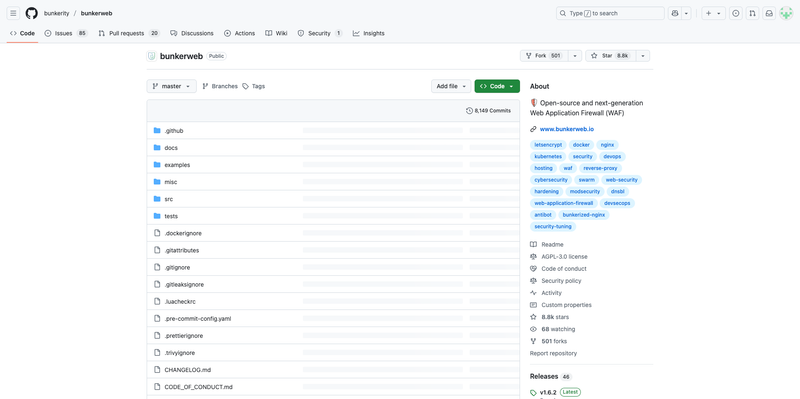When it comes to open source Web Application Firewalls (WAFs), two names often pop up: SafeLine and BunkerWeb. Both are modern, self-hosted WAF solutions, but they take very different approaches to securing web applications. In this article, we’ll break down the key differences, strengths, and ideal use cases for each — so you can make the right choice for your stack.
Overview
| Feature | SafeLine | BunkerWeb |
|---|---|---|
| Detection Approach | Intelligent semantic analysis engine | Rule-based security modules |
| Core Engine | Nginx + custom detection engine | Nginx with Lua-based plugins |
| Bot Protection | Strong anti-bot & anti-scanner capabilities | Basic bot detection |
| Content Encryption | Encrypts HTML & JS to disrupt crawlers | Not supported |
| Traffic Filtering | Context-aware, behavior-driven inspection | Static rules, headers, rate limits |
| Use Case Focus | Web app protection with deep traffic analysis | Hardened reverse proxy with security tuning |
| Community | Active GitHub + Discord | Slower updates, fewer contributors |
| License | Fully open source (no paid features) | Open core, some features gated |
Detection Capabilities
SafeLine
SafeLine uses a custom-built semantic detection engine — not simple pattern matching or regular expressions. It analyzes the intent and structure of HTTP traffic, making it highly resistant to obfuscation and evasion techniques.
Key features include:
- Context-aware detection of SQLi, XSS, RCE, file inclusion, etc.
- Protection against logic abuse and parameter tampering
- Dynamic HTML and JS encryption to block crawlers and scanners
- IP reputation and behavioral tracking
This makes SafeLine ideal for defending complex, modern web applications, not just blocking known signatures.
BunkerWeb
BunkerWeb leans on traditional rule-based defense. It focuses on:
- Enforcing security headers (CSP, HSTS, etc.)
- Blocking user agents, bots, and bad IPs
- Basic protections from OWASP CRS
- TLS hardening and brute-force rate limiting
It’s great for hardening a reverse proxy setup with minimal configuration, but lacks advanced inspection logic or adaptive threat response.
Use Case Comparison
| Use Case | Best Choice |
|---|---|
| Block automated vulnerability scanners | ✅ SafeLine |
| Protect login and business logic endpoints | ✅ SafeLine |
| Harden Nginx with security headers | ✅ BunkerWeb |
| Enforce HTTPS / TLS / HSTS | ✅ BunkerWeb |
| Need deep semantic analysis of HTTP traffic | ✅ SafeLine |
| Want a drop-in reverse proxy with basic WAF rules | ✅ BunkerWeb |
Installation Experience
Both tools support Docker and Kubernetes.
- SafeLine:
bash -c "$(curl -fsSLk https://waf.chaitin.com/release/latest/setup.sh)"
Access dashboard at https://<your-ip>:9443
Docs: GitHub - SafeLine
- BunkerWeb:
docker run -d --name bunkerweb -p 443:443 bunkerity/bunkerweb
Configuration is handled via environment variables.
Docs: GitHub - BunkerWeb
Final Thoughts
- If you're looking for serious attack prevention, deep inspection, and bot resistance — SafeLine is the way to go.
- If your focus is more on reverse proxying with added security controls — and you want something closer to an NGINX drop-in — BunkerWeb might suit you better.
They aren’t mutually exclusive either. For layered security, some developers choose to run BunkerWeb in front of SafeLine.
Useful Links
Still unsure? Try both in Docker and simulate an attack — you’ll quickly see the difference.





Top comments (0)